I have always enjoyed mystery/detective stories in any medium. I suppose I started with ‘Hardy Boys’ as a child and then Sherlock Holmes and Agatha Christie. Here we have a selection of quite a few authors who work I have enjoyed over the years.
So
A is for ABC Murders
Starting with Poirot this is one of my favourites of his stories. Very clever plot and also based partly in Churston. I also enjoyed the TV version which is not always the case. Unfortunately none of the railway or Churston scenes were done locally.

B is for (The Adventure of the) Blue Carbuncle
From Poirot to Sherlock Holmes. Again a great story which was well adapted for the Brett TV series.
Set around Christmas and involving a stolen gem, and a Christmas Goose!
You will see there will be no spoilers in my narrative to the stories in case you haven’t read them!

C is for ‘ Curtain- Poirot’s Last Case‘
This was written by Agatha Christie during World War 2 allegedly because she feared for her own survival of the bombing. She wrote many Poirot and other novels afterwards and only authorised publication 30 years later just before she herself died.
It is no secret that Poirot dies at the end of the novel which is possibly set in Styles – from her first book. The plot however is very different from other stories

D is for Dead in Devon
A new author today – except she is not new to me or to many friends who know her through local theatre as a director and actress.
Stephanie Austen’s first book is a murder mystery set in and about Ashburton. Her main character – Juno Browne – works in the town, walking, dogs, helping out older people etc but gets unwittingly involved in a murder. It is a good story and the added benefit to someone like me is that you can recognise the places, the shops, the pubs etc . Nice picture of Nuns Cross Farm on Dartmoor on the cover.
I have read all three books – Dead on Dartmoor and From Devon with Death are 2 and 3.!

E is for (The) Empty House
Back to Holmes – indeed The Return of Sherlock Holmes. Conan Doyle ‘killed’ off his character in order to concentrate on other work but succumbed to public pressure to bring him back.
In ‘The Empty House’ Watson is studying the murder of Ronald Adair somehow shot in a locked room surrounded by money. He collides with a scruffy old bookdealer who then comes to his house and reveals himself as Holmes in disguise. Since Reichenbach when he escaped while his foe died he has been pursued by associates of Moriarty trying to kill him.
The empty house in the title refers to a house opposite Baker Street. Any more information would give the plot away!

F is for Foyles War
Television this time though I expect the stories are also in book form.
Created by Anthony Horovitz, the stories are set in southern England around the Second World War and immediately afterwards. The plots cover typical wartime subjects – black market, avoiding being called up, German POWS and the services.
I am a great admirer of Michael Kitchen as an actor and he is ideal in the lead role.

G is for Greek Interpreter
The Adventure of the Greek Interpreter appears in the ‘Memoirs’ and is the story in which Watson discovers that Sherlock has a brother Mycroft. Mycroft is as intelligent but totally inactive, holding some obscure position in the civil Service and living in the obscure Diogenes Club.
This story is about the title character being paid – but under duress -to translate a conversation with a Greek individual who is clearly a prisoner. It transpires that a previous interpreter had died. A woman is involved and they are trying to get the imprisoned man to sign certain papers.

H is for (The) Holy Thief
One of the series of Cadfael novels by Ellis Peters. Her real name was Edith Pargeter and she wrote other books under that name.
Cadfael is a Welsh monk, based at Shrewsbury Abbey who before holy orders had fought in the Crusades. To the consternation of his Abbot he regularly turns detective and always solves the mystery. I discovered the books in the library of a small guest house in Shrewsbury.
The first story is about the search in Wales for the bones of Saint Winifred to be brought back to the Abbey as a religious artefact.
This particular story follows a theft of the reliquary containing the bones, and the recovery.

The books were made into an excellent TV series starring Derek Jacobi- the only downside being that they were filmed in Hungary!
I is for Inspector Colbeck – The Railway Detective
Another relatively new author but quite prolific. Edward Marston has written a few series of Detective novels, based on Railways, Elizabethan Theatre, First World War etc.
The Railway detective- there are about 20 books so far – is working to solve crime on Britain’s new and expanding railways in the 1850’s onwards. His stories are very readable and as is common in this type of fiction the main character is at odds with his superiors. Marston’s research is very good as all the tales have realistic settings and events.
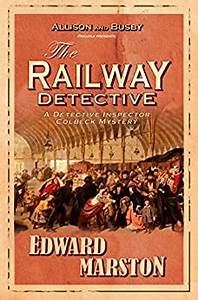
J is for ‘Jack the Ripper’
A real mystery this time. In 1888 11 women – mostly prostitutes were gruesomely murdered and mutilated. most of the murders were put down to one individual who was never identified. his name came from a letter to the press using the name ‘Jack’ but it is not known if he was the killer. eventually, only 5 of the killings could be definitely allocated to one killer.
The number of suspects exceeded 100 – popularly believed to be a Doctor or Aristocrat. The Duke of Clarence and Lewis Carroll are two of the more unlikely contenders.
The ‘Ripper’ title later came to be used for Peter Sutcliffe – the Yorkshire Ripper who committed 13 known murders.

K is for Kingsmarkham
The home beat of Ruth Rendell’s Inspector Reginald Wexford. Again about 24 books from this writer with this character though she wrote many other works including psychological thrillers. She also wrote under the pseudonym Barbara Vine.
I have read a few of the books but my memory really is of the excellent television series starring George Baker. From Doon with Death is the first Wexford Book.

L is for Labours of Hercules
More Agatha Christie. This is a collection of 12 short stories very loosely based on the Greek stories of the labours of Heracles. They start with the Nemean Lion and end with Cerberus the three-headed dog who guarded Hell.
The TV adaptation for the David Suchet series only used 5 of the labours -with small input from another 2. They were combined as one story set in a Swiss hotel.
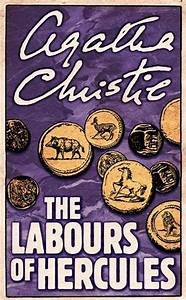
M is for Murder, Miss Marple and Midsomer!
Though quite a few of Poirot’s cases are theft, it seems that for Miss Marple the majority are of murder and not only just one death. Murder at the Vicarage was the first full length novel including Miss Marple and the village of St Mary Mead. She had appeared in short stories later collected as the Thirteen Problems. Personally I enjoyed being involved in ‘ A Murder is Announced’ on stage.
A number of actresses have played her both on television and film and it is difficult to choose a favourite though I might plump for Joan Hickson.
Miss Marple’s clues came from her observations of normal life in a small village – though with the number of murders it was hardly an ordinary place. Perhaps though not as many murders as in Midsomer’s villages where the weekly death count investigated by the Barnaby’s can hardly have left anyone alive!

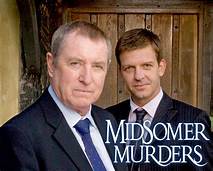
N is for Nemesis
Miss Marple again – in this case the last Marple novel Agatha wrote (1971) though published before Sleeping Murder. The novel takes us a way from St Mary Mead with the story based on an earlier meeting between Miss M and Jason Rafiel in the ‘ Caribbean Mystery’. Jason Rafiel refers to Miss Marple as his ‘Nemesis’
After his death she receives instructions via solicitors to solve an unspecified crime by setting off on a bus tour with an assemblage of people also selected by Mr Rafiel. Needless to say, Miss Marple solves what was a very old crime.
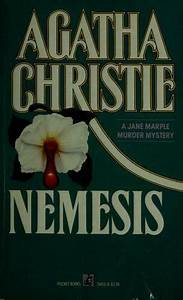
O is for Oldacre and Oranges
Two stories from Sherlock Holmes.
One of my favourites. Jonas Oldacre is the ‘Norwood Builder’ in the story of that title. Oldacre is apparently murdered by a young solicitor, Hector McFarlane, who has drawn up the builder’s will where he is more or less the sole beneficiary. He does not know he has a connection with Oldacre but the latter was many years ago engaged to his mother. She broke off the relationship and married the solicitor’s father.
The only body appears to have been burned in a fire in the garden of Oldacre’s house and the police arrest McFarlane as Inspector Lestrade has a very strong case. To say any more will reveal the ending.
The Five Orange Pips is an earlier story where a family keeps receiving an envelope marked K K K and containing five orange pips. After getting the letter the recipient dies. Holmes realises (as we would today) that K K K is the Ku Klux Klan and the pips are a warning. Despite his best efforts, the last recipient dies before Holmes can help him.


P is for (Edgar Allan) Poe
Specifically the ‘ Murders in the Rue Morgue’. Written in 1841 it is often described as the first true detective story though the later ‘Moonstone’ by Wilkie Collins makes a similar claim.
The detective in question is C. Auguste Dupin – whose methods can be seen later in Holmes and Poirot. As with Holmes the narrative forms a story told by an acquaintance – though unnamed. Two women are savagely murdered and the wrong man is arrested. Dupin solves the crime and gives an explanation at the end. Quite a traditional format now.

Q is for Queens of Crime
Four female detective story writers are classified under this heading; Agatha Christie, Margery Allingham, Ngaio Marsh and Dorothy L Sayers. Agatha has of course already been covered -and probably again. The other three each have a leading detective character in much the same way:-
Margery Allinghams’ leading man was the enigmatic Albert Campion and his oddly named ‘assistant’ Magersfontein Lugg. On TV they were played by Peter Davison and Brian Glover respectively. ‘A Crime at Black Dudley was the first book.
Ngaio Marsh’s policeman was Detective Chief Inspector Roderick Alleyn. A member of the gentry he had worked his way up from constable and was played on TV by Simon Williams and then Patrick Malahide. He first appears in ‘A Man Lay Dead’
Lastly, Dorothy L Sayers creation was Lord Peter Wimsey, completing a trio of gentlemen detectives. first appearing in ‘Whose Body?’ he has been played on TV in the seventies by Ian Carmichael. His assistant was Bunter.
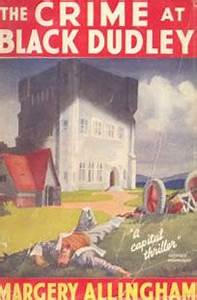
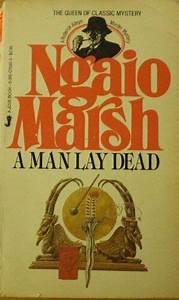
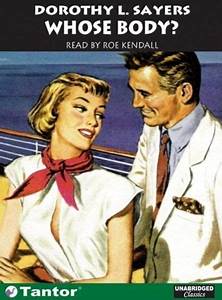
The four ‘queens’ have been followed by a number of excellent female detective and crime writers of varying styles. They include Martina Cole, Val McDermid, Caroline Graham, Ellis Peters, Lynda La Plante and many more
R is for Red-headed League
In my top 3 Sherlock Holmes stories (and in Conan Doyles as well).
A pawnbroker is persuaded by his assistant to apply for a job at the Red-headed League which pays more than he earns from his shop. The job of copying out Encyclopaedia Britannica suddenly ends.
Holmes quickly realises that the whole thing is stunt to get the man out of his shop while his assistant gets up to no good – digging a tunnel underneath with robbery in mind.
The TV adaptation with Tim McInnerny and Richard Wilson was excellent.

S is for Sherlock
I.e. the 21st century version starring Benedict Cumberbatch and Martin Freeman.
The series created by Mark Gatiss and Steven Moffat takes stories from the Conan Doyle originals and brings them into this century. The titles are roughly the sae – for instance the first one became a Study in Pink rather than Scarlet. The plots have similarities but are given the twists and turns for which the writers are well known.
I have to say that I enjoyed the first few but the increasing complexity of later episodes left me a little disappointed – particularly The Hounds of Baskerville and The Reichenbach Fall
There is continuing talk of further shows but the commitment of the two stars have made it difficult.

T is for Tommy and Tuppence (Beresford)
A pair of detectives/spies who appear in 5 Agatha Christie novels. The are chronological books from their early twenties to their 70’s. Tommy is the careful one who works for the government whilst Tuppence is more carefree.
They have been made in TV dramas a number of times. The Secret Adversary was the first, in 1982 with James Warwick and Francesca Annis. The last was Partners in Crime with David Walliams and Greta Scacchi. ITV also made a version but put in Miss Marple with Tuppence, Tommy having a minor role.

U is for Unsolved Mysteries
And there a lot of them – some more probable than others!
I have already mentioned Jack the Ripper and there are many unsolved murders and disappearances. One disappearance is the Mary Celeste – the ship found abandoned in the Atlantic in 1872. One of the more plausible explanations is a mutiny or I seem to recall a Doctor Who episode with the Daleks on board?
Another ocean mystery allegedly responsible for many missing ships and planes is also in the Atlantic – the Bermuda Triangle.
Finally two creatures which may or may not exist – Bigfoot and the Loch Ness Monster!
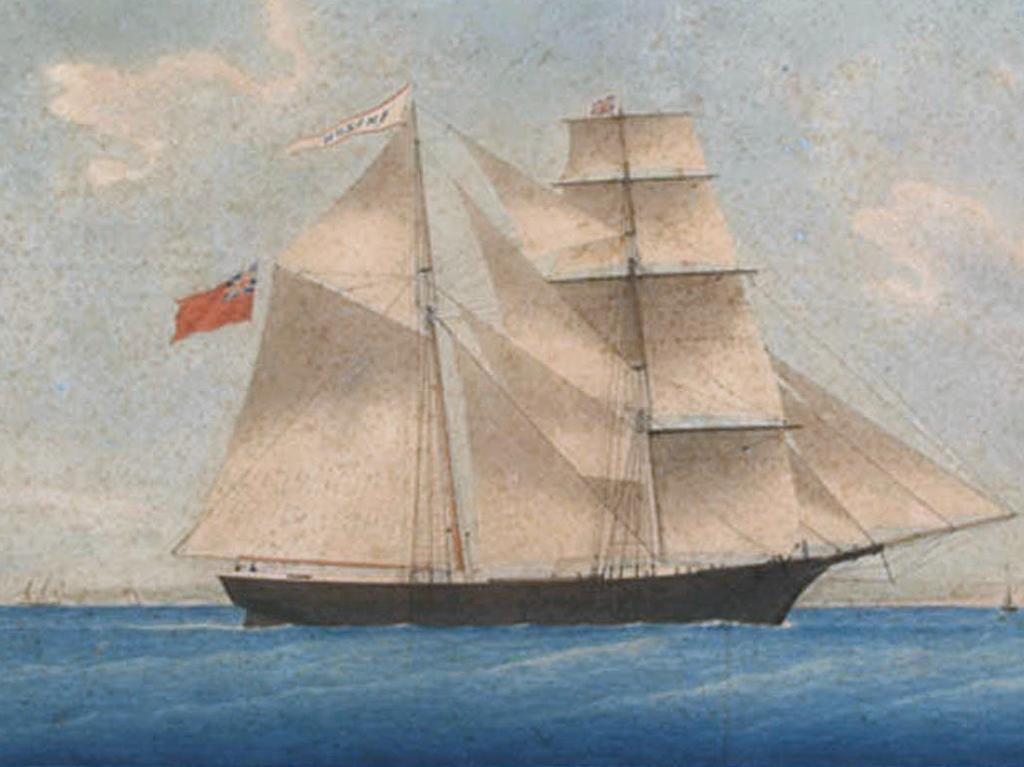

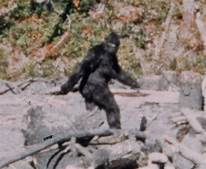
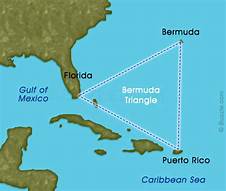
V is for ‘Valley of Fear’
The last of the four full length novels that Conan Doyle wrote about Sherlock Holmes. I have not read for quite a long time.
Although the last novel it sits in time before the death of Moriarty at Reichenbach Falls. When Holmes hears of the murder of a John Douglas he is certain Moriarty is involved, though the police still believe him to be a model citizen.
The plot is partly based on the Molly Maguires, an Irish gang also operating in the USA and the Pinkerton agents trying to catch them. The Valley itself is near Chicago.

W is for Wycliffe
Wycliffe was a Chief Superintendent in Cornwall in an ITV series of the 1990’s. A very good programme with Jack Shepherd excellent in the lead role. A very good advert for Cornish scenery as well.
Adam Barker, son of Ronnie, played a regular character before the actor’s downfall!
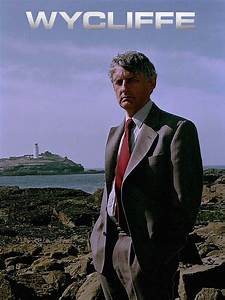
X is for XWord!
Always have to be creative with X. Crosswords, especially cryptic, are mysteries in their own right.
The man behind Inspector Morse – like me a lover of crosswords and real ale – was himself a crossword addict writing books on the subject. Colin Dexter wrote 13 Morse novels which was extended to 33 television episodes.
‘Last Bus to Woodstock was the first and ‘The Remorseful Day’ the last.
Dexter went on to be involved in the sequel ‘Lewis’ and the prequel ‘Endeavour’. I have watched many of the former but not the latter.
Colin Dexter himself did a Hitchcock’ – had an uncredited cameo role in every Morse episode!


Y is for Yellow
Two stories here – one from Agatha Christie and one from Conan Doyle.
‘The Yellow Iris’ is a Poirot short story appearing in a short story collection – Problem at Pollensa Bay and other stories. It revolves around the death of a wife from cyanide poisoning which then repeats itself. Agatha rewrote the story as Sparkling Cyanide with Colonel Race as the investigator and the TV version expands it by starting the story in Argentina.
‘The Adventure of the Yellow Face’ is a Sherlock Holmes story from ‘Memoirs’. Very different in that Holmes gets the solution completely wrong and also at the end it transpires that no crime has been committed. Holmes tells Watson that if he (Holmes) gets too full of his own importance to remind him of this failure.


Z is for Zero and Zorro
Another difficult letter!
Towards Zero is an Agatha Christie book with Superintendent Battle as the main investigator. ITV made it into a Miss Marple mystery. The book is set at a place called Gulls Point and the description fits around Dartmouth or Salcombe.
Zorro is another mystery character – like the Lone Ranger hides his identity behind a black mask. I remember the short films at the children’s Saturday morning cinema in Chesterfield – the ABC Minors. Resurrected of course in more recent films.
Created over 100 years ago Zorro – real name Don Diego de la Vega – means Fox in Spanish.


So there we are – an A to Z of my mysteries!
